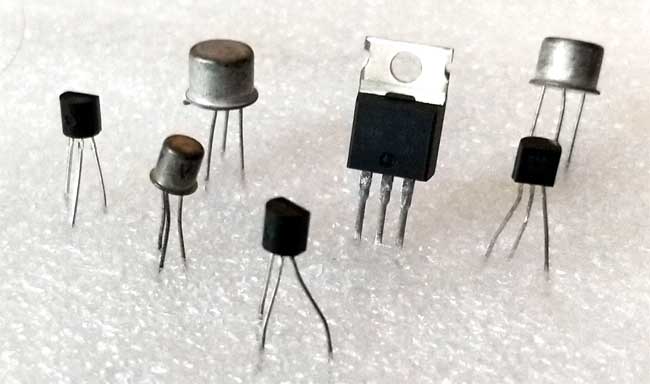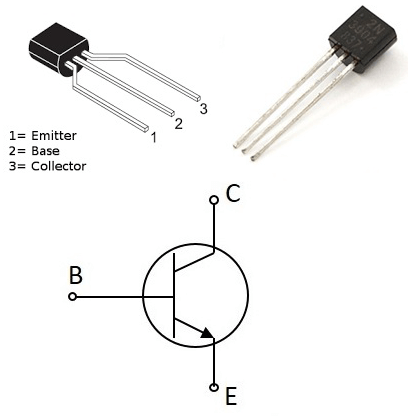Table of Content
Introduction
In the fast-paced world of electronics, transistors play a pivotal role in powering our devices. Understanding how transistors work is essential for anyone interested in the inner workings of modern technology. Let’s delve into the basics of transistors and unveil the magic behind these tiny yet powerful electronic components.
The Basics of Transistors
At its core, a transistor is a semiconductor device that regulates the flow of current or amplifies signals. There are two primary types: bipolar junction transistors (BJTs) and field-effect transistors (FETs). Each type has its unique characteristics, making them suitable for various applications.
Structure of a Transistor
A transistor comprises three layers – the collector, base, and emitter. The interactions between these layers dictate the transistor’s behavior. The collector collects current, the base controls the current flow, and the emitter releases the current. It’s this coordinated dance that enables transistors to perform their functions seamlessly.

Working Principle
Transistors operate based on the principles of N-type (negatively charged) and P-type (positively charged) semiconductor materials. In an NPN transistor, electrons move from the N-type layer to the P-type layer, creating conductivity. In contrast, a PNP transistor involves the movement of holes. This interplay forms the foundation of transistor conductivity.
Transistor Symbol

Check out Introduction to MOSFET here.
Transistor as a Switch
One fascinating aspect of transistors is their ability to function as electronic switches. By controlling the current flow, transistors can either allow or block the passage of electricity. This capability is extensively used in digital circuits, where binary code is represented by on/off states facilitated by transistors.
Transistor Types and Applications
The diversity of transistor types, such as NPN, PNP, and MOSFETs, allows for a wide range of applications. From power amplifiers to radio frequency circuits, transistors are indispensable in shaping the landscape of modern electronics.
How is a transistor made?
- The transistors are made from silicon, which is a semiconductor.
- It’s neither really a conductor nor an insulator. If we treat silicon with impurities, which is called doping, we can make it behave in a different way.
- If we dope silicon with impurities arsenic, phosphorus, or antimony, the silicon gains some extra free electrons that can carry an electric current so electrons will flow out of it more naturally.
- We can also dope silicon with other impurities like boron, gallium, and aluminum. Silicon treated this way has fewer of those free electrons, so the electrons in nearby materials will tend to flow into it. We call this sort of silicon p-type.
Why Do You Need A Transistor?
- A common question almost everyone gets is why do we need the transistor?
- So, the advantage of a transistor is that you can use a small current or voltage to control a much larger current and voltage so we need the transistor.
- It is super useful if you want to control things like motors, high-power LEDs, speakers, relays, and more from a Raspberry Pi, Arduino, and microcontroller.
- Transistors are also useful for simple sensor circuits. For example: light sensor circuit, the touch sensor circuit, or the H-Bridge circuit.
- Simply we use transistors in almost all circuits. It’s really the most important component used in electronics.
Conclusion
In conclusion, transistors are the building blocks of modern electronics. Whether serving as switches or amplifiers, their intricate dance of electrons and holes powers the digital world we inhabit. As we anticipate the future developments in transistor technology, let’s marvel at the impact these tiny components have had on our lives.
FAQs
-
What is a transistor?
A transistor is a three-terminal electronic device that can act as a switch or an amplifier. It is made up of semiconductor material, and its behavior can be controlled by the voltage applied to its terminals.
-
How does a transistor work?
A transistor works by controlling the flow of electrons through a semiconductor material. It has three layers: the emitter, base, and collector. When a voltage is applied to the base, it allows current to flow from the emitter to the collector, turning the transistor “on.” When the voltage to the base is removed, the transistor turns “off.”
-
What are the different types of transistors?
There are two main types of transistors: bipolar junction transistors (BJTs) and field-effect transistors (FETs). BJTs are current-controlled devices, while FETs are voltage-controlled devices. Within each type, there are different sub-types, such as NPN and PNP BJTs, and MOSFETs and JFETs for FETs.
-
What are transistors used for?
Transistors are used in a wide range of electronic devices, including computers, smartphones, radios, televisions, and more. They are used to amplify signals, switch circuits on and off, and perform a variety of other functions in electronic circuits.
-
How important are transistors in modern electronics?
Transistors are incredibly important in modern electronics. Without them, it would be difficult to build the compact, high-performance electronic devices that we use every day. The invention of the transistor is often considered to be one of the most important breakthroughs in the history of electronics.
You may interested in:
Learn Robotics: Guide for beginners